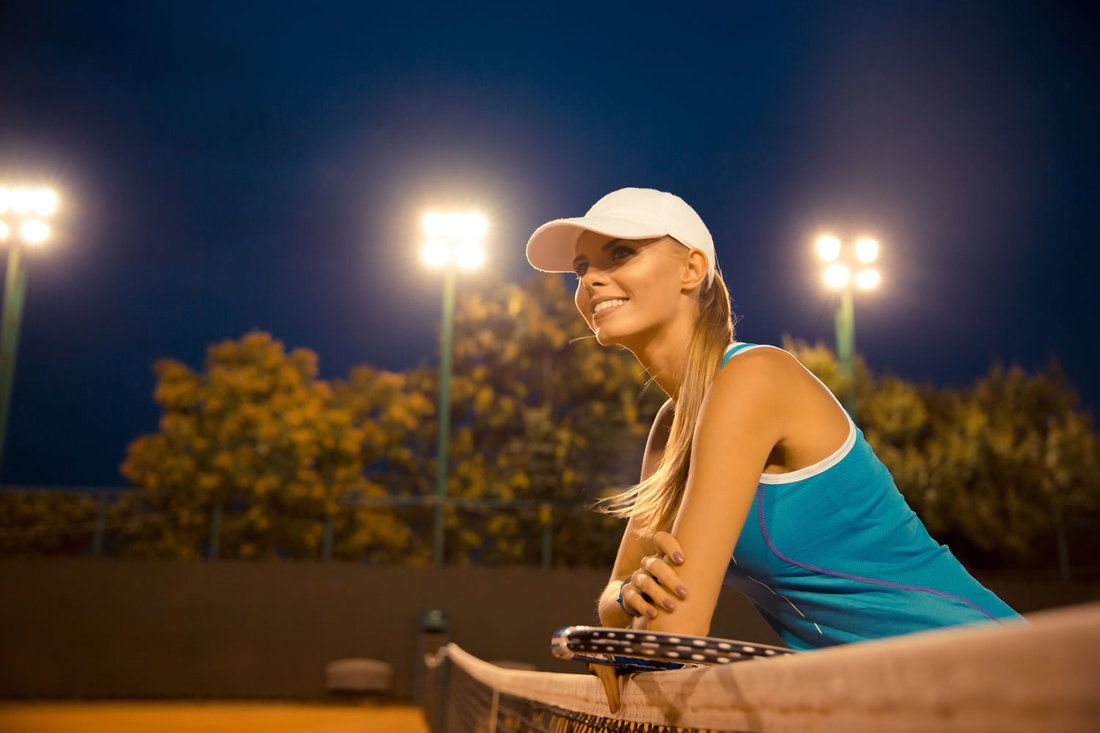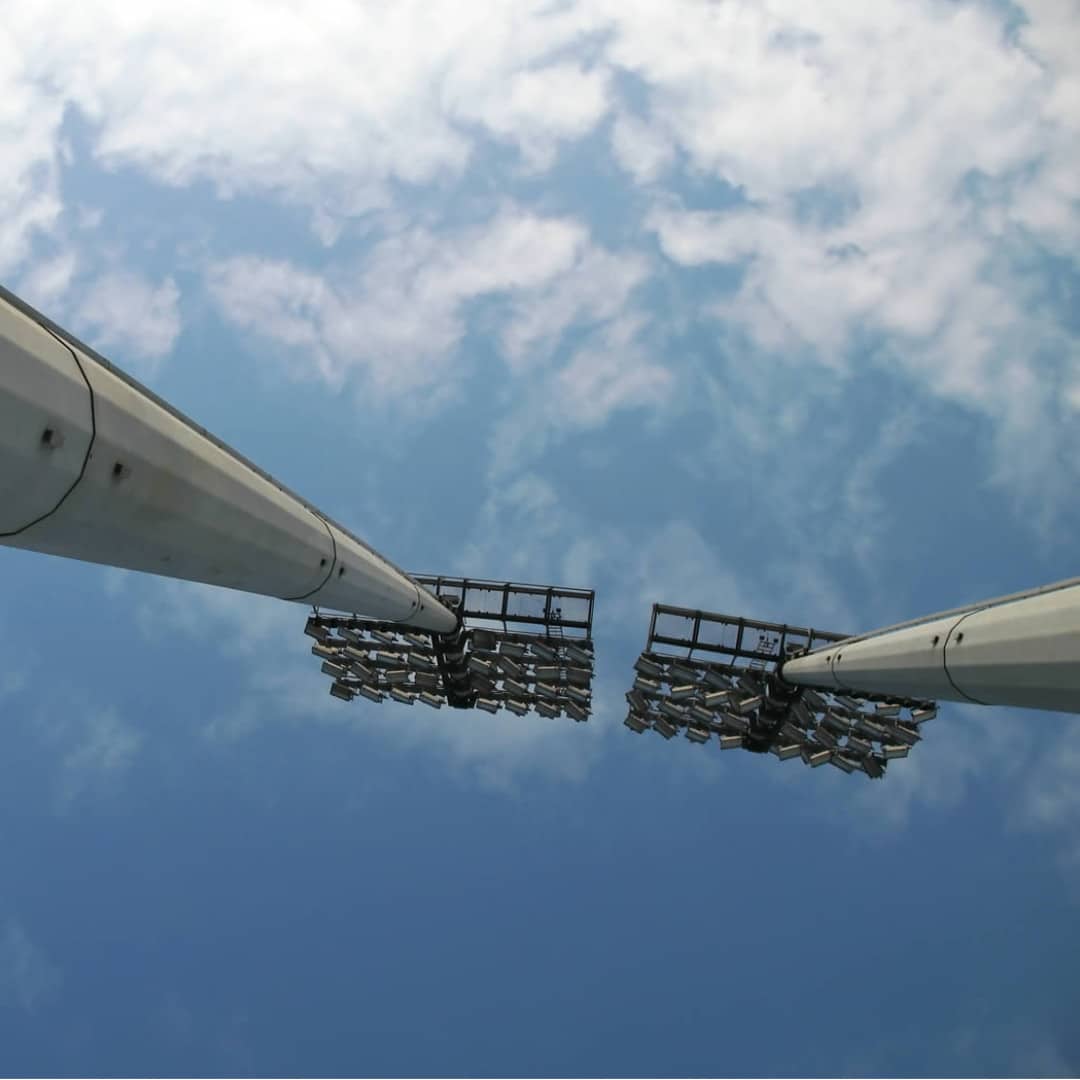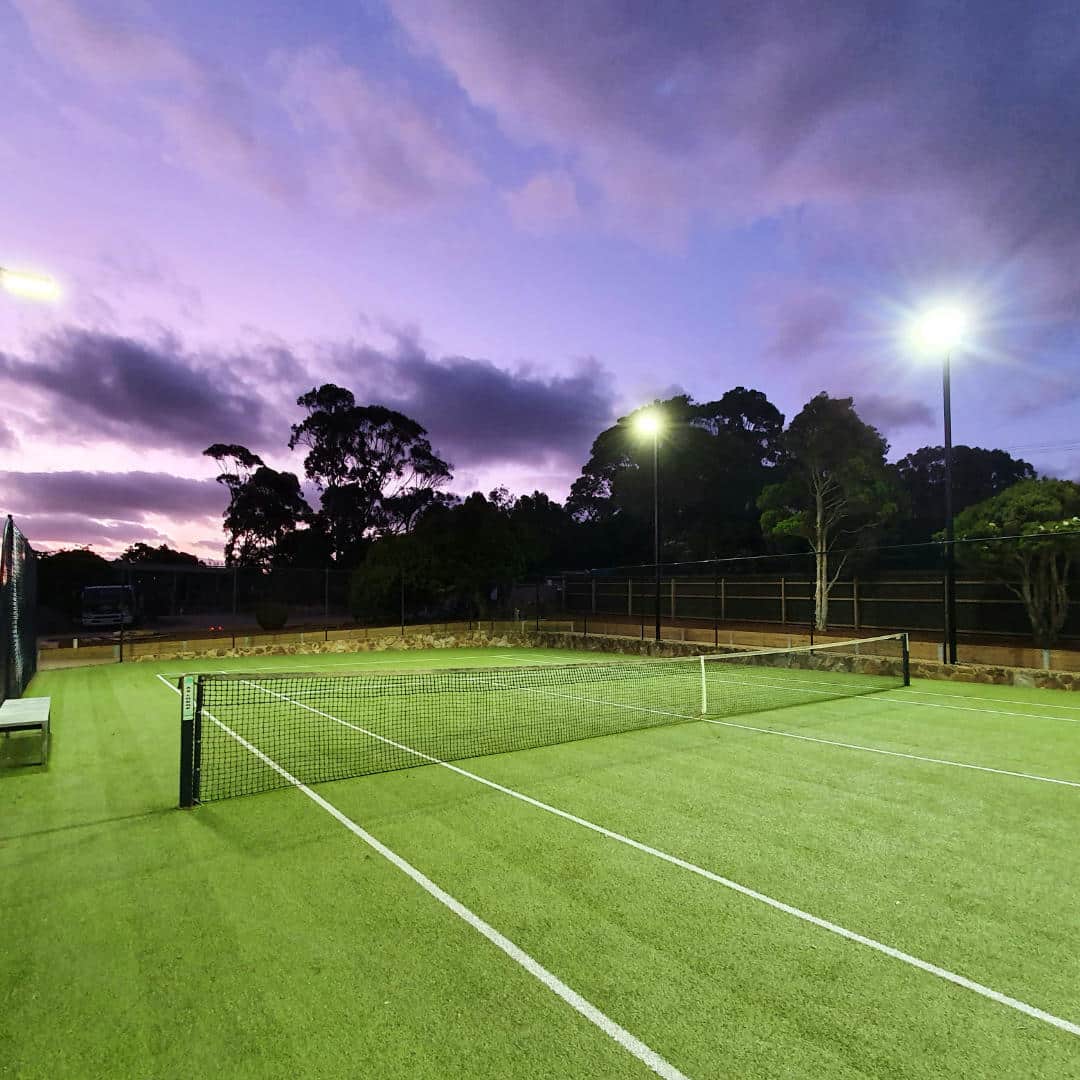
Tennis court lighting, like most things in life, vary dramatically depending on the type of usage and personal preferences. In principle, the ball is small and moves fast. This usually requires a higher level of lighting than, say, a football. The important thing to bear in mind is that it is always cheaper to do the job right the first time than to have to redo it in 2 years’ time. Other factors will include how close are your neighbours and how much do you want to spend.
Lighting levels
This would be the first consideration as everything else will be based on the lux levels required. For basic play and just to have enough light to see the ball a minimum of 100 lux is required. This would be suitable for a late night fun game, however, if you are more serious and using the court for training you should really be working to 250 lux. The Australian standard for recreational tennis is 250 lux. This will give you sufficient light for higher speeds of play and would be where some clubs operate their lighting levels. At the next tier up, competition courts operate at 350 lux. These lux levels allow for high speed play and would be suitable for any class of player. Any light levels are achievable, it just depends on where you see your style of play in relation to the budget you set. To go from 100 lux to 500 lux would require approximately 2.5 times the poles and light modules.
Along with the overall lighting level, uniformity, or evenness of the spread of light is equally important. It is not sufficient for a designer to quote an average lux level as this could vary from 500 lux directly under the fittings, to 100 lux in centre court. The average may be 250 but the useableness of the light will be hampered by being patchy and uneven. You therefore need to ensure that the horizontal uniformities are 0.6 and 0.3 (250 lux) and 0.6 and 0.4 (350 lux).
In order to make sure your friendly neighbours stay friendly, check the lighting plan provided by the supplier to ensure there is no spill light at ground level. We recommend the lights mount horizontally. This will tend to be the more specialised lights as many of the cheaper modules will mount at an angle. Whilst these angled units are less expensive, they can cost a lot in relationships as the glare from these lights can be literally seen for miles.
For domestic courts this is usually best to be kept as low as possible to minimise glare and over-spill light. Depending on the light fitting used and the lighting levels required a height of 6m to 8m is usually feasible. For public areas poles up to 20m are used, particularly when lighting a number of courts from a restricted number of poles. This height make uniformity easier as the light spreads naturally when given more distance.
To compensate for the lower poles it is often necessary to use more poles. For instance if using 10-15m poles, 4 would be sufficient to get 250 lux and good coverage. If 6-8m is ideal then 6 poles may be required to get the same results or 8-10 poles to achieve competition lux levels.
The main problem with metal halides was that when bulbs needed to be changed, the higher the poles the bigger the hassle. With LED’s having now come into their own in terms of reliability and longevity, keeping pole height down to make servicing easier is no longer an issue.
Remember that often these poles, although galvanised to resist rusting, can be powder coated or painted to suit your environment. Black or white are common but other options are often available on request.
Lighting poles are now available virtually off-the-shelf from a number of reputable suppliers. They conform to relevant regulations and the manufacturers can provide drawings and specifications to help aid a council planning submission. The poles are mostly supplied with a complete installation kit including a frame structure which gets concreted into the ground. This, along with the installation instructions, makes it simple and safe for any good contractor to install the poles.
The typical current draw for a tennis court will be from 2.4kW (less than a kettle to boil water) for achieving 100+ lux up to 6kW which would provide competition level lighting with 10 poles. The modules typically are supplied with an LED driver which can be mounted at the base of the pole or may be integrated into the design of the lamp. Whilst the wiring up and installation is simple, ensure that a qualified electrician does the installation and that the modules are compliant with local regulations.
This planning work will put you in good stead to have a lot of fun for many years to come. A cautionary note would be to use this guide to cross check what you are told by contractors. Sometimes things that are simpler, easier and cheaper for them may not be best for you in the long term.
Good luck and enjoy the game!


